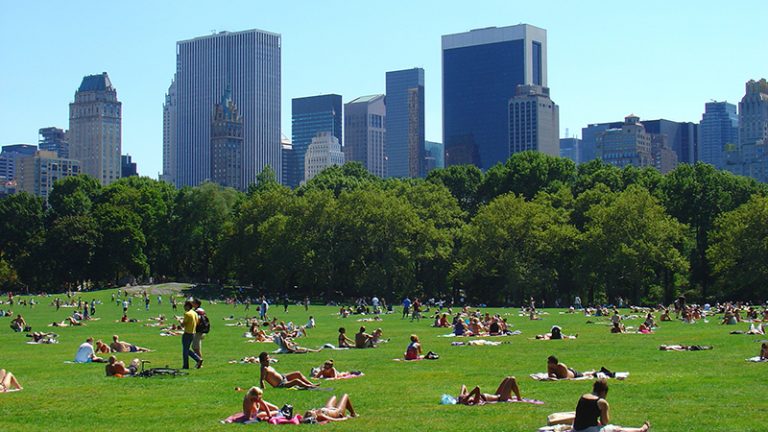Published on October 13, 2020

On average, extreme heat over the past 30 years has killed more people in the United States than any other weather event, according to the U.S. Natural Hazard Statistics. That means more lives have been lost to heat over the past three decades than to hurricanes, floods, or tornadoes — and National Oceanic and Atmospheric Administration (NOAA) data shows that extremely hot days are growing in intensity and frequency while also stretching farther into the spring and autumn seasons. This has serious consequences for human health, especially for populations that already face grave inequities.
As hotter average temperatures become the new normal, Black, Latino, and American Indian and Alaska Native (AIAN) communities suffer disproportionately. This is a historical trend that will be amplified by climate change, says Vivek Shandas, a professor of climate adaptation at Portland State University.
According to June Spector, associate professor and assistant chair of the Department of Environmental and Occupational Health Sciences at the University of Washington, many factors are to blame. “As with a lot of health outcomes, the systems and structures are really where we need to focus. For example, if we have a lot of Latinx folks working in agriculture, there’s also a rural aspect to it since there is less access to health services in rural areas. There are also issues around how folks are paid, and poverty aspects that come into play, as well as discrimination, power structures, and harassment,” says Dr. Spector. “These compound the disproportionate effects that these communities face.”
“Heat correlates with a lot of different potential health outcomes and it depends on people’s access to cooling,” says Spector, noting that people in low-income redlined neighborhoods may need to choose between running an AC unit and paying for another necessity.
Continue reading at Everyday Health.
Originally written by Kaitlin Sullivan for Everyday Health.